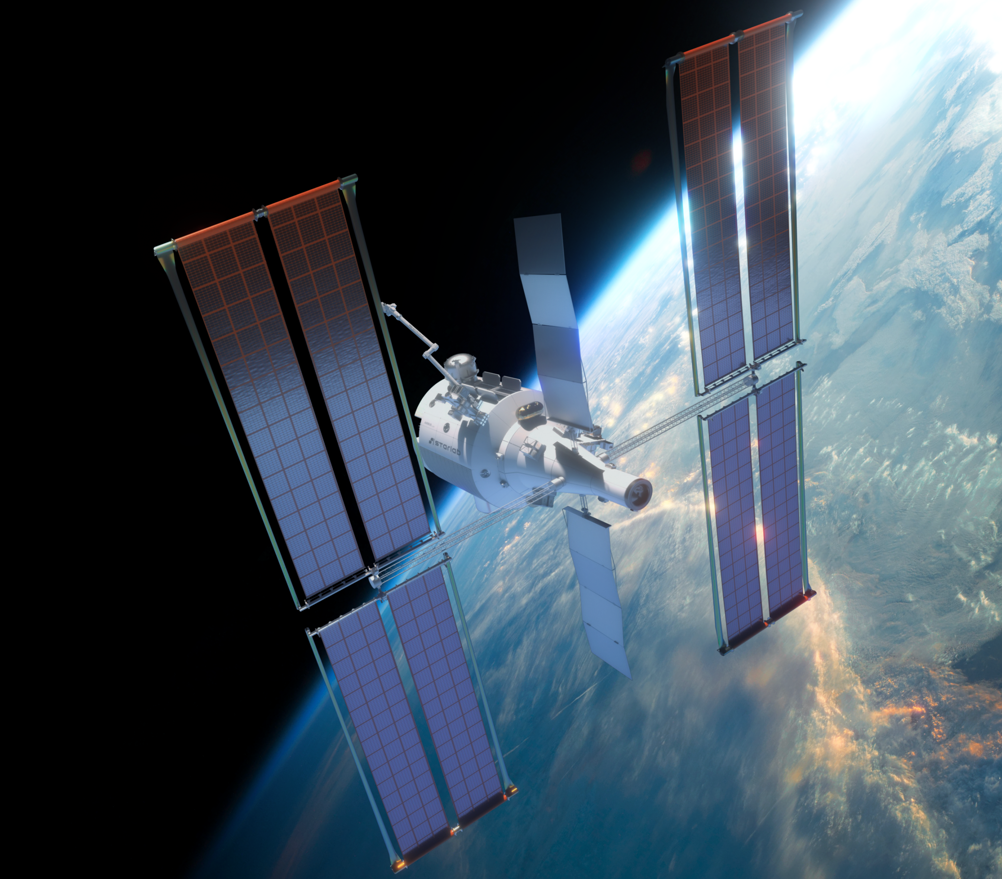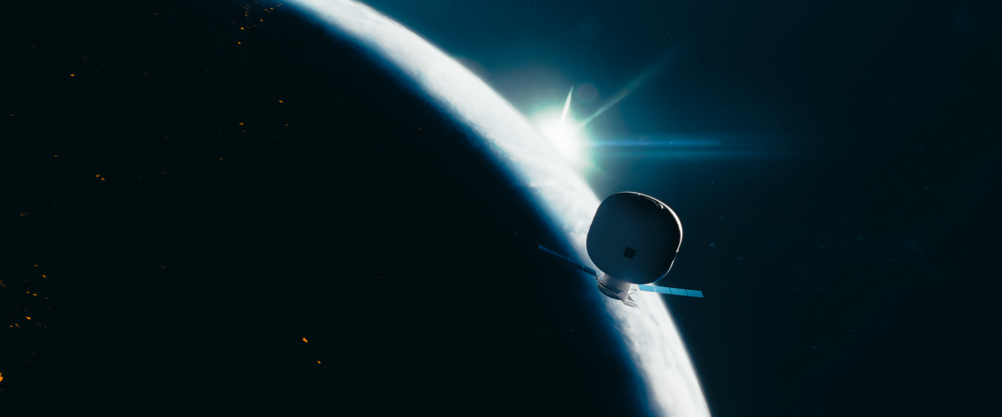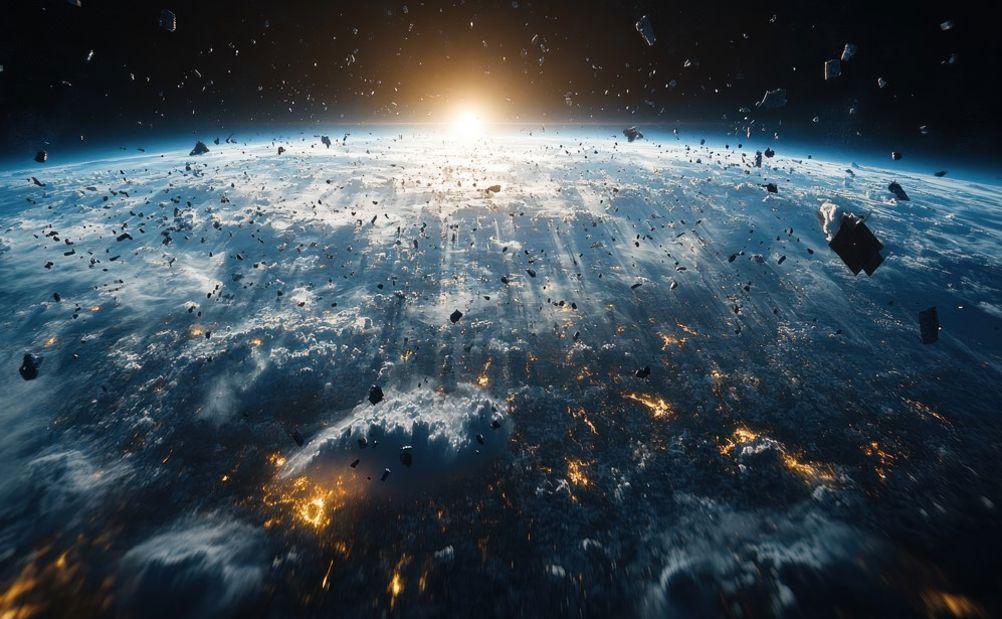The global space economy - once the sole preserve of governments - is growing and changing rapidly as a host of entrepreneurs and new space innovators eye up the potential of opportunities, ranging from asteroid mining and orbital data centres, to space-based solar power and zero-gravity drug development.
Indeed, according to analysts, commercial activities now account for almost 80 per cent of a sector that’s predicted to grow from $630 billion in 2023 to $1.8 trillion by 2035.
Most of the opportunities currently emerging owe much to the dramatic reductions in launch costs in recent years, with the advent of reusable rockets such as the SpaceX Falcon 9 enabling - in some cases - a more than 90 per cent decrease in the cost of putting a payload into space.
But whilst getting into space cost-effectively is a key step in the development of the sector, it’s only part of the picture. Staying there is the next big challenge. And earlier this year (March 2025) experts from across industry gathered at London’s Space-Comm Expo to explore some of the technical and economic hurdles standing in the way of a sustainable long-term presence in our cosmic backyard.
The first step is shoring up the foundations of our current foothold in orbit. And with humanity’s only off-planet outpost - the International Space Station (ISS) - now approaching retirement, ensuring a continued orbital presence is a critical priority.

Gregg Ray is vice president for emerging science and technology at Voyager Technologies, the leading provider of implementation services to the ISS and one of the key partners, along with Airbus, in the Starlab commercial space station project, which recently completed its preliminary design review and is expected to launch in 2028. “We have to maintain a sustained human presence,” Ray told the Space Comm audience, “If the ISS were to deorbit, we’re going to have a very steep hill to climb.”
His concerns were echoed by Saleem Miyan, CEO of Max Space, a Texas based firm that’s focused on the design and development of scaleable expandable habitats for orbital and ultimately planetary use. “One of the most important things, particularly with the short-term decommissioning of the ISS, is having a location in which to operate,” he said.
For Miyan and others, this means more than simply replacing the ISS. It’s about developing a widespread ability to operate and stay in space and to be able to build the structures and habitations that will enable this.
Alongside the systems currently under development by the likes of Max Space and Voyager, a key technology here will be the development of precise, agile propulsion systems that will enable spacecraft to assemble and service these structures
we see space propulsion being the next disruptor
Dr Thomas Clayson, Magdrive
Dr Thomas Clayson is CEO of UK space startup Magdrive, which is working on the development of an innovative plasma propulsion system designed to crack exactly that challenge. “We need to be able to operate very close to spacecraft, we need to be able to manouvre very agilely, and we need to be able to rendezvous, so we see space propulsion being the next disruptor,” he told the Space Comm Expo audience.
Spun out of Imperial College London in 2017, Magdrive is developing a range of thrusters designed to enable proximity operations such as refuelling or rendezvous maneuvers with other space craft.
Claimed to be both more efficient and more powerful than existing chemical or electrical systems, the thruster operates on a solid metal propellant that burns 100 times hotter than a rocket and is contained with magnetic fields. The nozzle can be tilted by varying the properties of the plasma chamber allowing the Magdrive to direct its thrust and to gimbal with no moving parts. This means that a single thruster can be used to propel a spacecraft and control altitude.
“Our high power systems are going to enable spacecraft to be more agile and more efficient, which is going to enable them to operate in these more congested orbits, but it’s also going to enable those more greenfield applications,” added Clayson. “It’s going to enable spacecraft to be more agile, to change their orbit entirely, to rendezvous, to dock with other things, and transport materials around.”
The company is currently working on a number of versions of the thruster, with it’s so-called “Rogue” system poised to undergo in-orbit tests later this year as part of the European Aspace Agency’s ScaleUp programme.
Magdrive has also recently received a £1m grant from the UK space agency to work on the “Super Magdrive”, a version of the thruster that could potentially be refueled using resources found in space.

Whlist in the long-term many of the systems and technologies under development will pave the way for space-based servicing, repair and manufacture, this remains a vision for the future. In the meantime therefore, another key capability is the development of facilities here on Earth which can thoroughly test new technologies before they’re put into space
One key destination in this regard is Iceland, which – thanks to a landscape and terrain closely resembling lunar and Martian terrains - has long played a unique role as a natural testing ground for space technology.
In the mid-1960s, the country hosted the Apollo astronauts for geology training, whilst the country’s volcanic terrain and unusual geology are now playing a key role in the test and development of technology for NASA’s Artemis programme, which hopes to ultimately establish a permanent crewed base on the surface of the Moon.
Daniel Leeb, CEO of Iceland Space Agency, explained to conference delegates that the landscape is particularly useful for testing surface infrastructure, space suits, and so-called in-situ resource utilisation technologies: systems that will ultimately enable astronauts to make use of resources such as lunar regolith. “We have to practice and test those technologies here on Earth in high fidelity environments and Iceland has more of those diverse terrestrial analogues to Moon and Mars than found anywhere else on the earth.”

With the space sector changing rapidly, and a host of commercial organisations champing at the bit to open up new markets and opportunities, there are now also big questions about the political and regulatory landscape that will shape the sector in the future. Do we allow space to become a commercial free-for-all? Or is there still an important role for governments and agencies that are perhaps better equipped to step back and take a long-term view?
Whilst some certainly believe the sector is now healthy enough to prosper without government support - “If government were suddenly to pull out on space entirely, the space industry would still exist”, said Magdrive’s Clayson - most panelists seemed to agree that governments still have an important role to play.
Indeed, according to Voyager’s Gregg Ray, one of the biggest obstacles currently facing the sector is the current geopolitical instability. “The greatest thing we need to overcome right now…is political instability. Some day we will be part of a sustained in-space economy, but right now, it’s largely a state sponsored function, and we need to insulate the space ecosystem from partisan politics.”
For Daniel Leeb, governments are key to setting a stable political and regulatory backdrop. “For a sustainable space economy the governments really need to be involved,” he said, “because the market alone does not necessarily drive sustainable practices and business.”
Without this framework, warned Leeb, the industry is at risk of choking off future progress. “There are a lot of people that say, no, we can’t focus on treaties ….but we need new treaties that can enforce regulations, because what’s happening in low Earth orbit right now is not sustainable at all, and a disaster in lower orbit could mean that we’re not going anywhere.
SPACE DEBRIS
One potential stumbling block to humanity’s long term off planet future is the vast and constantly growing cloud of space debris orbiting our planet.
Made up of defunct satellites, spent rocket stages, fragments from disintegration, and even flecks of paint travelling at thousands of kilometers per hour, space debris is becoming a serious threat to existing and future operations.
As well as an estimated 6,000 defunct satellites, there are currently thought to be more than 36,000 tracked objects larger than 10 cm orbiting Earth, and millions more too small to monitor. Each of these poses a collision risk to satellites, space stations, and future missions.
Already, satellites regularly have to perform avoidance maneuvers to dodge debris, but with the number of objects being launched increasing dramatically the problem is getting worse.
The nightmare scenario is the so-called Kessler Syndrome, where more and more collisions lead to a runaway cascade of debris that renders certain orbits too hazardous to use and imposes huge restrictions on our ability to get into orbit and operate there.
Against this backdrop, engineers are exploring a number of options including the incredibly complex challenge of active debris removal , in which spacecraft equipped with technologies including robotic arms, nets and harpoons are used to capture waste and remove it from orbit.

There are currently a number of ongoing initiatives, including the UK space agency’s COSMIC mission - which is aiming to develop and launch systems that will remove two inactive satellites from orbit. The UK-based subsidiaries of Japanese firm Astroscale and Swiss firm ClearSpace have both passed key milestones in the development of technology for this mission, which effectively use robotic arms to capture objects before dragging them down into lower orbit and releasing them into the Earth’s atmosphere. The UK Space Agency is shortly expected to select one company to lead a consortium for Phase 3 of the project, which would cover manufacturing, assembly and testing of the spacecraft ahead of launch and operations in low Earth orbit (LEO).












CCC Report Finds UK Climate Targets Still Within Reach
In 1990 67% of the UK´s electricity came from coal-fired power stations and even without renewables the transition to gas was a major contributor to...